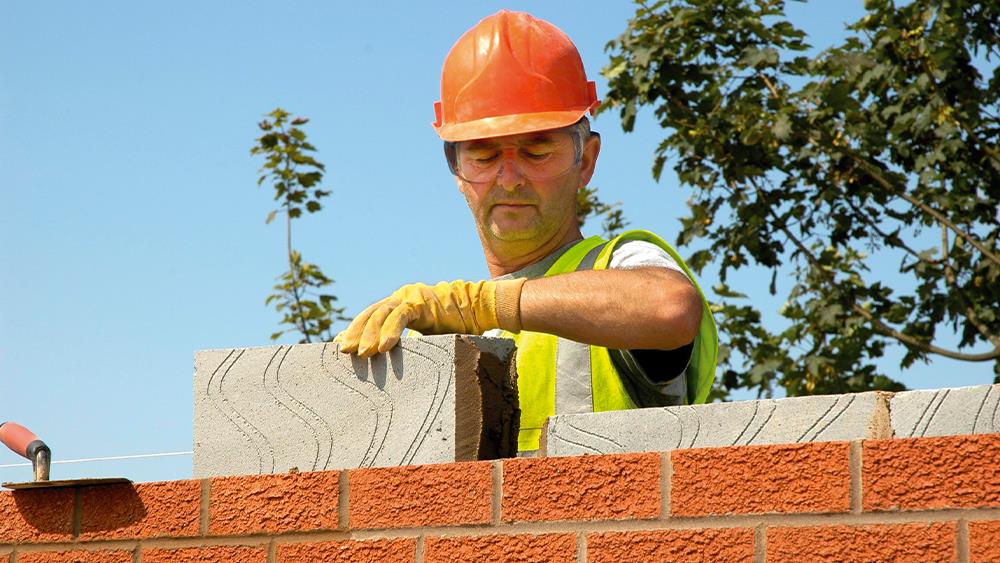

Summer has arrived and with that comes a new set of challenges for those working outdoors in warm weather. What guidance can merchants pass on to customers working with concrete and cement during the summer season? Paul Lees, Head of Commercial at Tarmac, offers his advice.
Last year, the Health and Safety Executive reported a spike in people seeking advice on hot weather working, increasing by nearly 1,000% as temperatures exceeded 40°Celsius for the first time in history.
As high temperatures become a more regular occurrence, whether working indoors or outdoors, it’s necessary to be aware of the risks and plan accordingly while on-site and completing practical work. So, what do merchants need to know to help their customers prepare for working in the heat?
Perfecting the curing process
Hot weather can have a major impact on concrete and mortar and, therefore, it’s critical to get conditions right for working.
During the curing stage, the cement present in concrete and mortar undergoes a chemical reaction with water. This reaction is essential for the normal strength development of the mortar. And three factors – humidity, wind speed and temperature – can really make or break this process.
To begin with, higher temperatures will naturally increase the likelihood of too much water evaporating during this stage. If a mix dries too quickly, it will shrink and crack and result in weak, dusty and porous concrete. Critically, too, it will also mean a marked reduction of strength.
One simple measure to prevent this from occurring is to ensure that the mix is in a moist condition after it has set. Simple solutions for your customers can include covering work with damp hessian or plastic sheeting to prevent evaporation, pre-wetting of surrounding porous materials or, for horizontal surfaces, misting with light water spray at regular intervals (especially with mortars and renders).
Remind your customers, too, to use cool mains water where possible instead of storing water in containers ready for use. If it’s not possible to use mains water, it’s vital that stored water is kept cool.
Protecting your equipment
It’s not only the mortar that needs consideration. You should also take great care of your tools and other equipment during the hot summer months. It’s important to take the necessary steps as any breakages or damage can be very costly.
Any equipment not in use should be kept out of the sun, especially for a long period of time, to ensure that it doesn’t overheat or break down from sun exposure. If storage inside isn’t possible, tarps will also do the job.
When it comes to overheating, if you are working with power tools, it’s important to ensure your batteries are up to the job before you start. Winter is infamous for ruining batteries, but summer can be just as harmful. So, if your battery is already weak, the chances are that it won’t cope with the heat.
Bricks can also be affected by extreme heat. This is because they are drier and will suck up more water than usual from the freshly placed mortar. Too much of this will result in poorly hydrated, low-strength mortar. Storing bricks in the shade will prevent this and dampening the bricks before use will also help to control the suction.
Look after yourself
However, while it’s important to take all of the above into account, it’s necessary that builders look after themselves first and foremost. The summer heat can create difficult working conditions which could have severe consequences if builders are unprepared. Here are our top tips to ensure you’ll be safe while working outside this summer:
Stay hydrated to avoid heat exhaustion and dizzy spells. Also avoid dehydrating liquids like alcohol, tea, coffee and caffeinated soft drinks.
Protect yourself from the sun – every year there are more than 3,000 cases of skin cancer caused by outdoor work in construction[1] so reduce the risk by ensuring there is shade available on site and don’t forget to wear suncream, a hat and sunglasses.
Pace yourself. Make sure you know your own limits, slow down and take regular breaks.
Wear light-coloured and lighted weighted clothing. Look for personal protective clothing that has cooling properties and will not cling or feel heavy.
Arrange work to avoid the hottest part of the day, wherever possible. Use this time to recharge and cool off.
Take care of your team. Look out for signs of heat stress in your colleagues and be prepared to act fast if you spot any symptoms, which could include confusion, extreme sweating and unsteady walking.
Careful planning and preparation is important to ensure safe and successful work this summer. It could be the key to a seamless summer of construction for your customers – and offering some good advice along the way will enhance your reputation even further!
[1] https://www.jewson.co.uk/promotions/nivea